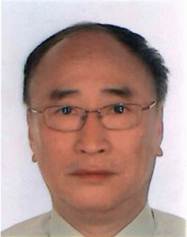Artificial Crystal Research Center, Shanghai Institute of Ceramics, Chinese Academy of Sciences
SEMINAR
题目:现代低温超导SQUID系统
报告人:张懿
中科院上海微系统与信息技术研究所
时间:2017年6月14日(周三)上午9:00
地点:中科院上海硅酸盐研究所(嘉定园区)1号楼2楼,218会议室
联系人:罗豪甦(021-69987760)
Biography:
Yi Zhang was born in Shanghai, China. He received his Bachelor-Phys.degree in 1982 at the Jiao Tong-University, Shanghai, his Dipl.-Phys. degree in 1987 and his Ph.D. degree in 1990 at the Justus-Liebig University Gießen, Germany.
He joined theForschungszentrum Juelich in 1990, dedicating his work to the fabrication and application of High Tc rf SQUIDs. In April 1993 he became awarded the title of an extraordinary professor for modern physics at the University of Peking and in November 1997, he became awarded the title of an extraordinary professor on the field of SQUID technologies at the Jiao Tong-University, Shanghai. In 2001, he spent four months as a guest scientist at the University of California, Berkeley, in Prof. John Clarke’s Group, working on the novel superconductor magnesiumdiboride and developing the first MgB2 SQUID. He became the title of an adviser professor at University Tongji in Shanghai in October 2002. He was one of the co-authors of “SQUID Handbook” edited by John Clarke and Alex. I. Braginski, WILEY-VCH Verlag GmbH & Co. KGaA (2004). Recently, he has been invited as adviser professor at Shanghai Institute of Microsystem and Information Technology, Chinese Academy of Sciences, and guest professor at Jilin University (2011). In April 2014, Shanghai government has awarded him with “international cooperation award”. Dr. Yi Zhang has more than 150 publications and about 30 pending or filed patents, and is one of the leading scientists for SQUIDs worldwide. Several of his works were cited in the Book “100 Years of Superconductivity” edited by Horst Rogalla and Peter H. Kes (2011), CRC Press, Taylor & Francis Group.
报告内容:
由于SQUID的高灵敏度,所以经常被应用于极限测量中。现代低温超导SQUID系统不以追求系统极限噪声为目标,而从实际测量出发,制作发展一套简单的,高鲁棒性的,具有可接受噪声水平的SQUID系统。
SQUID系统有两个主要噪声源,SQUID内禀噪声和读出电路噪声。在电流偏置情况下,SQUID的电压-磁通转换系数是连接这两部分噪声的桥梁。SQUID的Steward-McCumber参数βc可以用来平衡这两部分噪声的贡献。读出电路的噪声主要来源于前置放大器,它又有两个独立的噪声源,电压噪声和电流噪声。电流噪声源的贡献又取决于SQUID工作点的动态电阻。因此,SQUID内禀噪声和读出电路噪声对SQUID系统噪声的贡献是互相牵制的。
在传统的SQUID系统中,人们试图把读出电路的噪声抑制到SQUID内禀噪声以下,以获得最佳系统噪声,即可以实现读出SQUID的内禀噪声。然而,它取决于SQUID的βc,对强阻尼SQUID (小βc),其内禀噪声是很难被读出。而对于弱阻尼SQUID (大βc),其内禀噪声却很容易被得到,因为它远大于读出电路噪声。
在现代SQUID系统中,我们寻找这两部分噪声的平衡,以达到最低系统噪声。基于这个理念,我们开发了一套最简单的读出电路,它仅用一个运算放大器来完成所有读出电路的功能,低噪声放大和输出电压线性化 (磁通锁定环)。这样的SQUID系统具有简单,稳定,操作方便,适应于户内外各种应用,我们已演示了其应用在心磁图测量 (磁屏蔽室内) 和地球物理瞬变电磁法测量 (多地野外测量)的可行性。
欢迎广大科研人员和研究生参加!


 当前位置:
当前位置:

